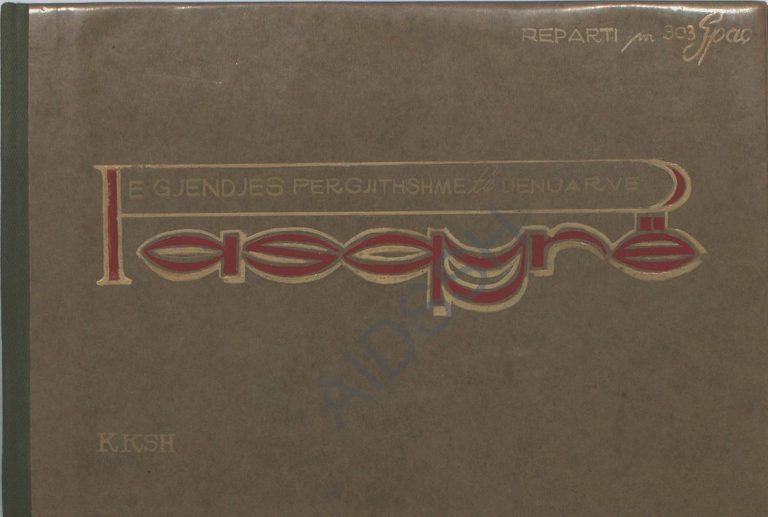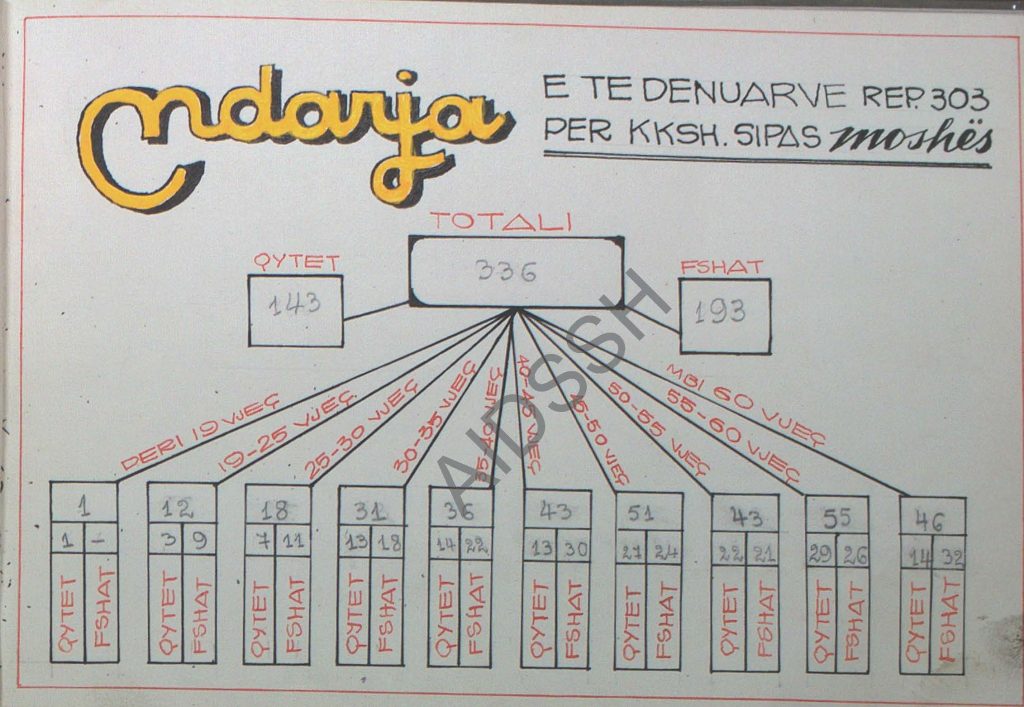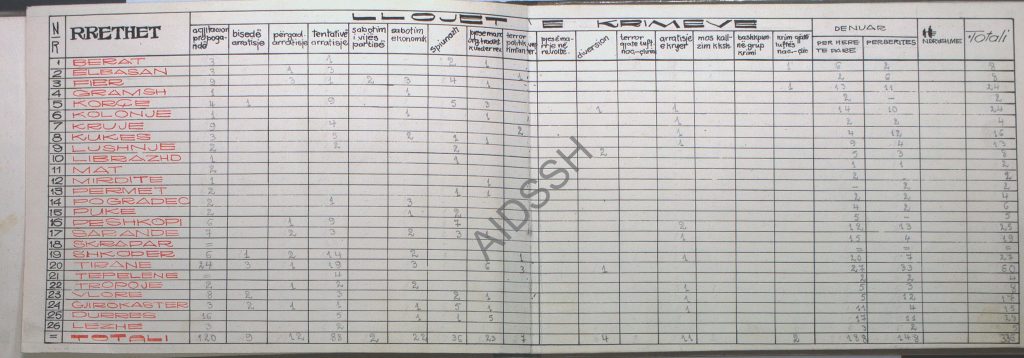The Convicted
Name Lists
Nominal List of Political Prisoners in the Spaç Prison Camp, known as “Re-education Unit No. 303 Spaç-Mirditë” contains about 2,123 names and has been provided to AIDSSH by the General Directorate of Prisons, Ministry of Justice. According to the verifications carried out, the list is missing other names of former political prisoners who served their sentences in the Spaç prison camp.
To fill the identified gaps, AIDSSH has also compiled the nominal list of political prisoners from the Spaç ORV file. This list contains 106 names that do not appear in the nominal list of political prisoners in the Spaç prison camp of the General Directorate of Prisons for the years 1968–1991.
A third list provides names of other former political prisoners who do not appear in either of the two lists above. The names in this list come from former prisoners who did not find themselves in the above lists, from their family members, from
This list will be continuously updated based on new information. If you were a political prisoner in Spaç, or had a relative who was, and do not find the name in these lists, write to: info@autoritetidosjeve.al so that the name can be added to the nominal lists on this page.
Note: The lists are continuously updated based on new information.

The Condition of Political Prisoners in Spaç
According to an overview of the general condition of the prisoners in the Spaç prison camp, found in the AIDSSH archive and dating to 1986, the types of charges and crimes defined at that time by the totalitarian regime can be clearly seen, such as: agitation and propaganda, discussion and attempted escape, espionage, sabotage of the party line, participation in revolt, diversion, etc. All of these were considered crimes against the state, or abbreviated in documents as KKSH.
The overview shows that out of 363 political prisoners serving sentences in Spaç, 120 were convicted on the charge of “agitation and propaganda,” meaning solely for expressing their free opinion that did not align with party policy. Prisoners convicted only for having discussed escaping numbered 9, while 88 were political prisoners convicted for attempted escape.
The document also contains several other classifications of the prisoners by age, education, family political background, and place of origin. Although not all pages of the overview are complete, the method of compiling and dividing the statistics speaks volumes about the persecution of all those whom the regime considered or declared “enemies of the people.”


Regulation and Schedule of Operations
The day of the political prisoners in the Spaç prison camp was oriented toward the implementation of the camp regulations, with the aim of strengthening the regime of serving the sentence for the prisoners. The internal regulation of the regime for the prisoners was drafted by the unit command, sent to the Directorate for the Enforcement of Criminal Decisions as well as to the Mirditë District Prosecutor’s Office for approval. The regulations had as criteria the security and re-education of the prisoners, the internal regime, as well as those for the realization of the respective quota based on the tasks. The regulations were divided into two parts; the first had as its object 21 points where the Rights and Duties of the prisoners were mentioned, and the second, behavior in the living area and at the work front. The internal regulations aimed not only at those convicted of Crimes against the State, but also for other crimes (photo document).
From a schedule table showing all the designated activities, including: waking up, meals, work, cleaning, and the hour for reading the press and Party materials. The photo is taken from a document of the Ministry of Interior archive which shows only the schedule of one shift, but in Spaç the political prisoners worked in three shifts.
For the prisoners there were also routine checks for their assembly in various situations, where the time norms for readiness to gather and secure the prisoners were set. The table shows the assembly of the prisoners from the work front at the designated point. The roll call and physical inspection by the guards were carried out by zone before the political prisoners entered the living area.
Reference: Fund 10 of the Ministry of Interior Archive
In each year, in the Spaç prison camp, there were around 900–1100 prisoners, 20% of whom were aged 18 to 25 years old; 75% were aged 25 up to 60 years oldand 5% were under 18 years old or over 60 years old. The data are shown in the graph below.

As seen from the graph, the largest percentage, 75%, is occupied by the age group 25–60 years, the age most capable of heavy work.
By sentences:
Prisoners sentenced to up to 5 years of imprisonment made up about 25% of them.
Prisoners sentenced to 5 to 10 years of imprisonment made up about 38% of them.
Prisoners sentenced to 10 to 15 years of imprisonment made up about 15% of them.
Prisoners sentenced to more than 15 years of imprisonment made up about 22% of them.
The data are shown in the graph below.

In the Spaç prison, throughout the years, about 55% of the prisoners were repeat offenders, and some were even re-sentenced while serving their sentence there.
A highly variable parameter was the origin of the prisoners, because the factors were always subjective. There were more prisoners, relative to the population, from the border areas.


